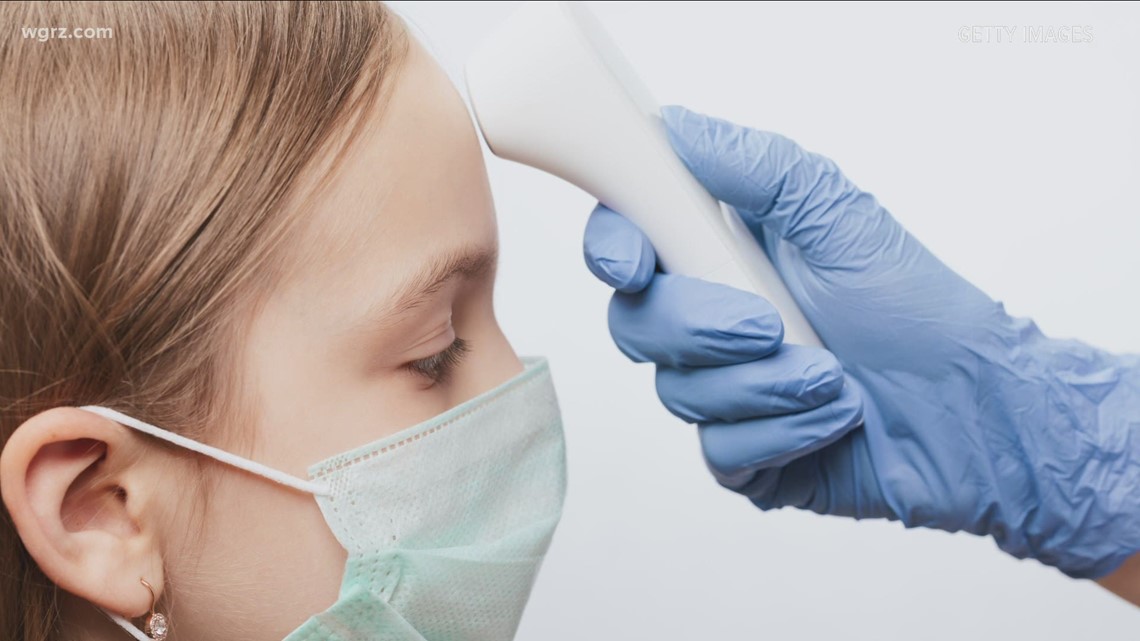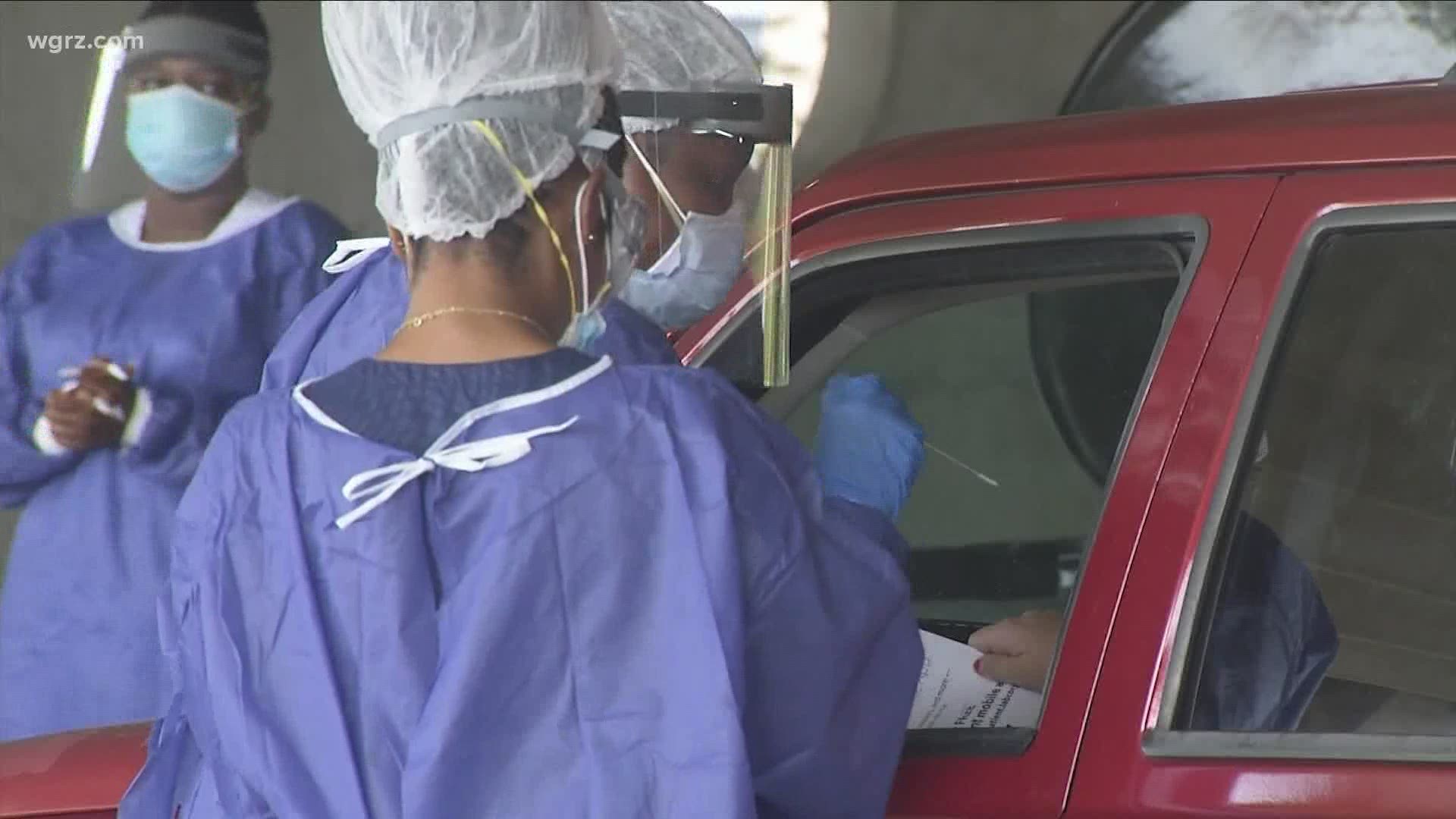DUNKIRK, N.Y. — “We need to see our family members," Jody Falkner said as she stood along the side of Temple Road in Dunkirk, not far from a barricade blocking the entrance to the visitor parking lot at the Chautauqua Nursing and Rehabilitation Center in Dunkirk.
Falkner’s 80-year-old father is resident there who is also fighting pancreatic cancer, and due to restrictions on visiting nursing homes in New York State, despite numbers of COVID-19 cases, she cannot go inside to see him.
Upset enough To protest
On Thursday, Falkner joined dozens of others similarly situated to picket the facility where she claims there are restrictions which go beyond the pale of the visitation restrictions impacting all nursing homes statewide.
“We aren’t even allowed to approach the windows to wave to our loved ones,” she said, further claiming that some who have tried have been told to leave or that nursing home staff would call police.
“I didn’t realize the virus could travel through a window," she said sarcastically.
2 On Your Side contact Dawn M. Harsch, Director of Corporate Communications for MVG Services (The McGuire Group, VestraCare, RCA/Absolut) which operates the facility regarding the claim, and who said she would investigate further.
“We haven’t gotten anywhere with them,” Falkner said. “Our complaints have fallen on deaf ears.
Confusion and confoundment abound
New York State’s "relaxation" of rules for visiting nursing homes amid the dwindling pandemic isn't making things easier according to some who’ve contacted 2 On Your Side. Viewers tell us they they continue to be confused and confounded by the ever changing guidelines.
The state on Tuesday said nursing homes that have been COVID-free for 14 days (which includes both staff and patients) can resume visits, which is down from its previous 28-day standard.
However, guests may only visit if they can show "proof" they've been COVID-19-negative for the previous seven days. And, as a viewer from Erie County noted to us in an email, proof of being COVID-free can be somewhat of a challenge to obtain.
“If you get tested at a county test site, they only give you the results via a telephone call. Nothing in writing," she noted.
When we contacted the Erie County Department of Health in regard to this, its spokesperson, Kara Kane, confirmed as much, writing that, “Though ECDOH does not offer an email option for COVID diagnostic test results, individuals who are tested through our diagnostic test sites can request the results to be mailed (after confirming their information). This viewer can call 716-858-2929 to make that request for results."
However, requesting and receiving their test results through the mail might not help a person obtain them in a fashion timely enough, in order to meet the seven-day window to secure a nursing home visit.
Kane offered that the health department can arrange pickup of a print copy of the results at the Rath Building (again, after confirming their information), but noted this would only apply to results from the county’s health lab.
The timeliness of test results is also being raised by viewers, one of whom wrote, “My primary care provider received my COVID results and notified me via email eight days later. (But) that puts me outside the required seven-day window."
When we emailed the state health department regarding such concerns, Public Information Officer Jill Montag wrote back, “Testing at nursing homes has proven to be among the most successful COVID-19 prevention measures, and it has saved lives. While we understand the anguish this virus has caused nursing home residents and their families, testing outside visitors will continue to protect our nursing home residents and front line workers from COVID-19.”
In addition, Montag noted that following the release of new guidelines on Tuesday, the rules were amended again on Thursday, providing the following additional information:
- The visitation guidance that we introduced Tuesday is in effect, and we issued clarifying guidance on Thursday available here.
- As stated in the clarifying guidance, “Facilities that had already resumed visitation under previous guidance may allow visitation without the presentation of a verified negative test result for a transition period until September 24, 2020. End of life and compassionate care visits are not subject to a verified negative test result but are subject to all other COVID-19 screening requirements.”
- Based on data from this week, more than 40 percent of New Yorkers received their test results within 24 hours and 80 percent within 72 hours, with the statewide average approximately two days.
- If New Yorkers go to a test site run by New York State, there is never any charge for a test. In addition, testing costs are covered by Medicaid for all eligible New Yorkers as ordered by a health care provider or by calling the NYS COVID-19 hotline at 1-888-364-3065.
- More information on how and where to get tested is available here. If you go to a test site operated by local governments, private companies including pharmacies and medical practices or not-for-profit organizations, you are advised to check with the testing site and your insurer in advance of being tested to confirm you will not be responsible for any fees associated with your test.
Testing not readily available outside urban areas
While the health department may claim that the statewide average for getting test results is two days, getting a test in the first place can be challenging for those who live away from urban centers, according to Falkner.
"It's just not a reality for many people in a rural area,” she said. “In Chautauqua County we have one facility, just one testing facility, that can do testing for people who are not symptomatic. We do not have rapid testing and we do not have free testing."
Meanwhile, her struggle to see her ailing loved one, and the pain from her inability to do so mirrors that of many across the New York State.
"Our loved ones not only need medical care, they need love and support. They need someone to hold their hand, and they need someone to let them know that we have not forgotten about them," she said.



